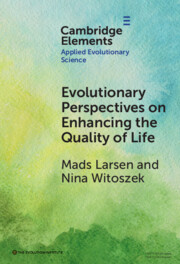Ownership is universal and ubiquitous in human societies, yet the psychology underpinning ownership intuitions is generally not described in a coherent and computationally tractable manner. Ownership intuitions are commonly assumed to derive from culturally transmitted social norms, or from a mentally represented implicit theory. While the social norms account is entirely ad hoc, the mental theory requires prior assumptions about possession and ownership that must be explained. Here I propose such an explanation, arguing that the intuitions result from the interaction of two cognitive systems. One of these handles competitive interactions for the possession of resources observed in many species including humans. The other handles mutually beneficial cooperation between agents, as observed in communal sharing, collective action and trade. Together, these systems attend to specific cues in the environment, and produce definite intuitions such as “this is hers,” “that is not mine.” This computational model provides an explanation for ownership intuitions, not just in straightforward cases of property, but also in disputed ownership (squatters, indigenous rights), historical changes (abolition of slavery), as well as apparently marginal cases, such as the questions, whether people own their seats on the bus, or their places in a queue, and how people understand “cultural appropriation” and slavery. In contrast to some previous theories, the model is empirically testable and free of ad hoc stipulations.



